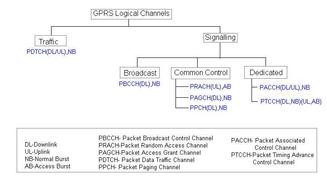
5G vs 6G: Key Differences in Wireless Technology
Explore the distinctions between 5G and 6G, covering definitions, working principles, features, and future advancements in wireless technology.
Showing 20 posts (Page 2 of 11)
Advertisement

Explore the distinctions between 5G and 6G, covering definitions, working principles, features, and future advancements in wireless technology.
Explore the key differences between 5G and LTE Advanced Pro in terms of data rates, frequency, bandwidth, compatibility, and more.
Overview of the 751-3 railway communication system, including its features, technology, and limitations. It was used for track-to-train communication in Europe.

Explore the fundamentals of Adaptive Multi-Rate (AMR) technology in GSM, including codec modes, operation, and channel coding for optimized voice quality.
Explore AMR conformance testing, loopback procedures, and key specifications for GSM devices. Understand tests for speech channels, bad frames, sensitivity, and more.

Learn the basics of Automatic Gain Control (AGC), an algorithm that monitors the received signal and automatically controls the gain in a receiver, especially in mobile devices.

A comparison of baseband and synthesized frequency hopping in GSM, covering their implementation and key differences.

Understand the differences between Bit Error Rate (BER), Block Error Rate (BLER), and Data Block Error Rate (DBLER) in GSM/GPRS/EGPRS mobile device testing.
Explore the merits and demerits of CDMA cellular technology, including its resilience to fading, privacy features, capacity, and challenges related to synchronization and handoff.

Explore the benefits and drawbacks of CDMA technology, including its robustness, security, capacity, and limitations like orthogonality and the near-far problem.

Explore cell phone radiation effects on the body, common symptoms, and the best methods for protection. Learn how to reduce exposure and potential health risks.

Explanation of cell re-selection in WCDMA/GSM networks, including trigger conditions, neighbor cell measurements, and the process of switching between WCDMA and GSM cells.

Cellular triangulation determines a mobile phone's location using signal strengths from cell towers. It's used in navigation, emergency services, and location-based apps, but accuracy varies.

Explore the key differences between cellular and ad hoc networks, focusing on infrastructure, routing, topology, and application.

Explore GPRS, a packet-switched technology for data connections over GSM networks. Learn about its architecture, frame structure, channels, and more.

Explore the advantages and disadvantages of Direct to Mobile (D2M) technology, which enables direct broadcasting to mobile devices without internet.
Explore the differences between EDGE and GPRS, focusing on data rates, modulation techniques, retransmission capabilities, and more. Understand how EDGE enhances GPRS.

Explore the benefits and drawbacks of eSIM technology for end-users, operators, and device manufacturers. Learn about global connectivity, security, and potential privacy concerns.

Explore the differences between eSIM and traditional SIM cards, including their advantages, disadvantages, and suitable use cases. Understand which option better fits your needs.
Explore the fundamentals of EVDO (Evolution-Data Optimized), its different revisions (Rev. 0, A, and B), and their key features, data rates, and improvements.
Advertisement